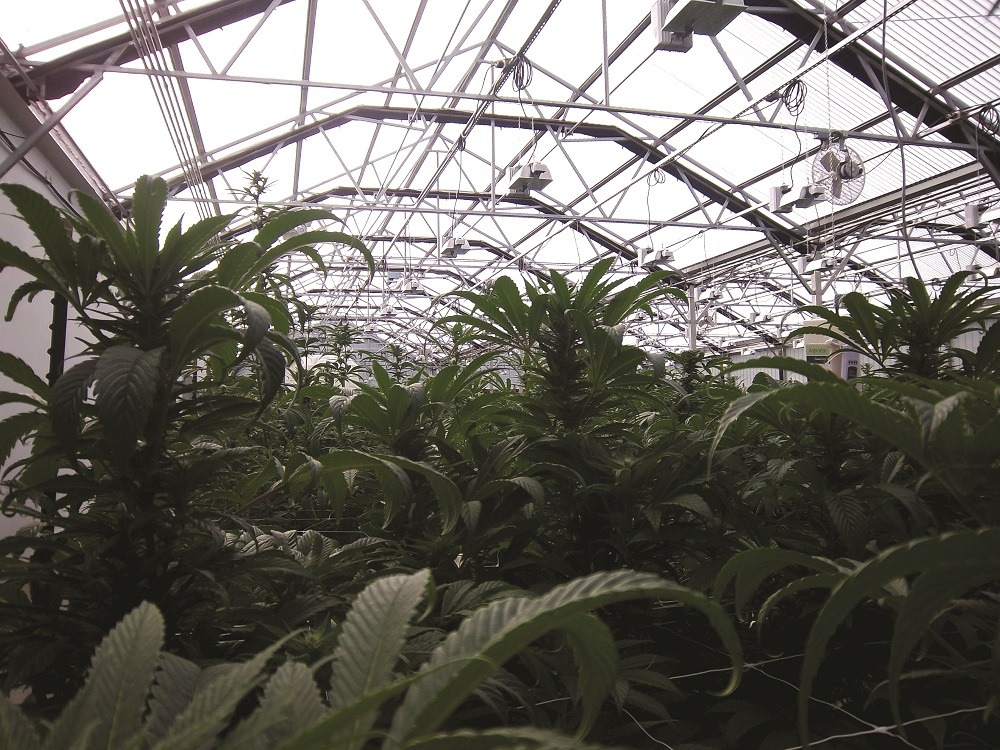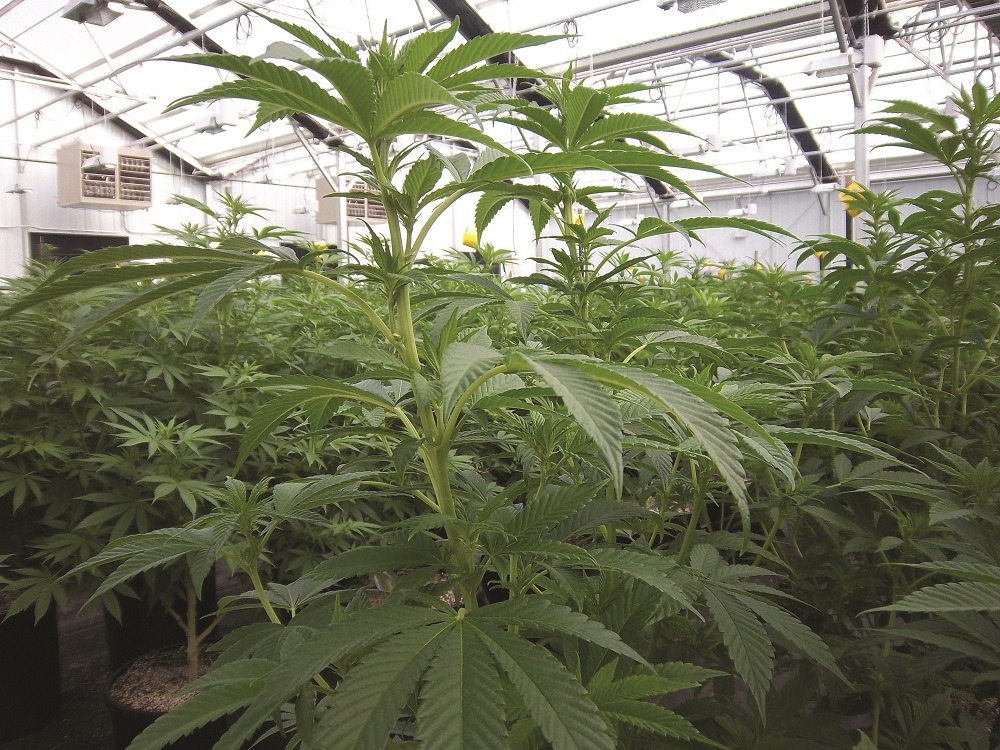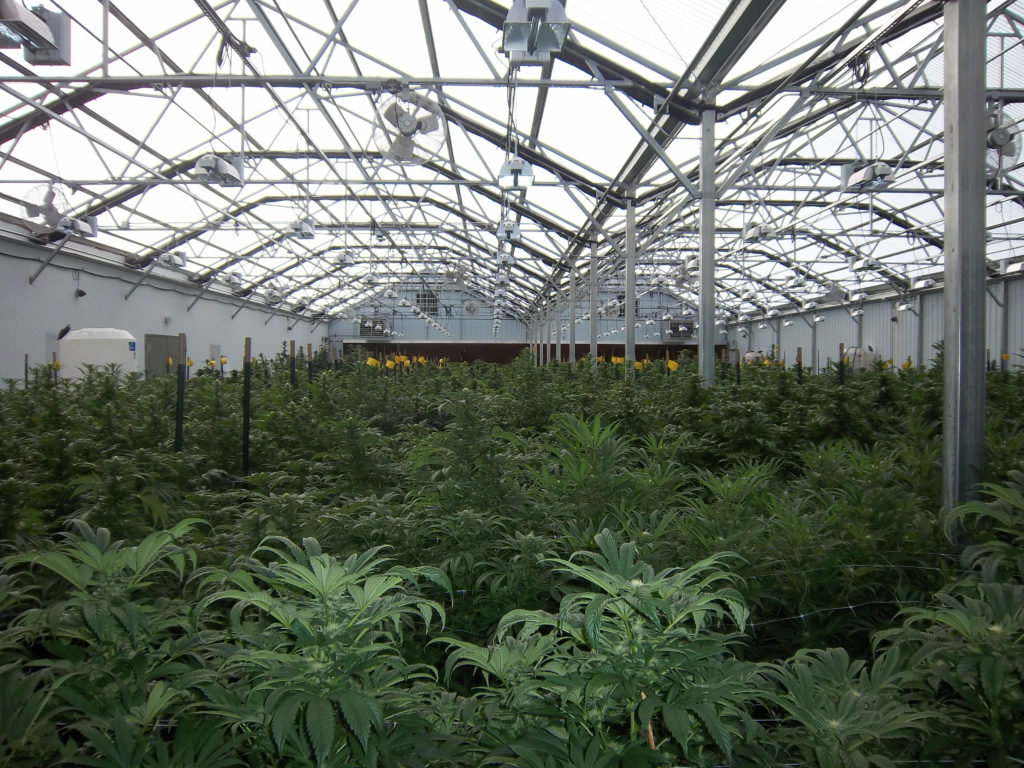The waiting is the hardest part
By Garrett Rudolph
After 10 months of preparation, waiting, construction and more waiting, the Colorado Leaf team is back in a familiar position … once again waiting anxiously to move on to the next step.
With construction of their commercial greenhouse nearing completion, brothers Brett and Keith Sprau hit a standstill just days before they had originally planned on moving in plants.
Advice and trends
Greenhouse manufacturer provides the scoop on growing techniques
By John Strieder
A greenhouse can unite indoor and outdoor growers under one translucent roof. Like any other indoor setup, a greenhouse offers climate control, security and the ability to maximize the number of harvests per square foot per year. Like the outdoors, it offers the energy-saving benefit of utilizing sunlight.
Greenhouse manufacturers are jumping on the opportunity presented by the emerging legal cannabis industry.
Greg Ellis, a regional sales director with Nexus Corp., says the marijuana industry will account for another increase in business this year. “We have added three people in our engineering and sales/marketing areas to accommodate this growth,” he says. “As marijuana proponents have stated, the industry’s growth is having a very positive impact on our economy.”
Ellis says he spends a third to half of his time developing business with the marijuana industry. Prior to legalization, he had essentially zero interaction with the cannabis industry. “We’ve been blessed to be in the heart of the start, in Colorado,” he says.
Ellis and Craig Humphrey, vice president of engineering, are in a good position to identify the important features and benefits of a marijuana greenhouse.
Essential features
Insulated metal siding panels: These conserve energy. They also offer a higher level of security — unlike plastic or glass, these don’t invite prying eyes. And light can’t get out, which means the greenhouse could be operated at full brightness in the middle of a dark city without disturbing anyone. “We are able to keep light contained within the greenhouse itself, so when you use supplemental lighting, it doesn’t raise issues with neighbors,” Ellis says.
Improved light deprivation: With the right flashings, growers can keep out more light than with a standard greenhouse. They can be engineered for 12 hours of light and 12 hours of pitch blackness — the same light control an indoor grow would provide. Growers can also take the steps of installing overhead curtains and putting light traps on the ventilation systems to achieve the goal.
Standard HVAC: The heating, ventilation and air conditioning equipment required for cannabis is similar to what would be used in a greenhouse designed for more traditional crops, such as tomatoes.
A roof that spreads the sun around: How can your translucent greenhouse roof improve on natural sunlight? With diffusion. Most commercial greenhouse manufacturers offer a roof made from a polycarbonate material that’s common in the ornamental flower industry. Sunlight scatters, bouncing around the greenhouse instead of beaming straight down as rays. Reflected off white walls and floors, the light hits the plants on all sides, promoting crop uniformity and more buds. “When it scatters, it really brightens that room up,” Humphrey said. “It really penetrates that plant canopy.”
Bigger fans: Marijuana cultivators can’t legally use the pesticides that a typical flower or vegetable grower would use. To keep pests out, the greenhouse builder must install more screens on the air vents — but the screens cut down on air movement. To compensate, bigger fans are required.
Before you buy
What do greenhouse sellers wish you knew before you contacted them? Customers can do some homework ahead of time that will make the greenhouse shopping experience easier.
Customers should keep in mind what their previous growing operation looked like (assuming they had one) and know whether they want a similar setup or a completely new design for their new greenhouse. They should come with as much information as possible about desired plant heights, crop times, containers and spacing.
“A lot of times, you get people who are brand new to this and really can’t answer any of these questions,” Ellis says. He notes that he can help customers design a space, right down to the benches. “We take your hand and lead you through it.”
Another key chunk of information to have is data about your site, he says. That includes everything from water quality to local building codes.
Identify your market. Not just the market (people who want marijuana) but your market. What niche group, specifically, are you selling to? Whose specific demand are you targeting? Determine that and you can identify a growing regime and design a production facility around it.
Last but not least, be prepared to prioritize efficiency, Humphrey says. As the cannabis industry matures, price pressures will affect every grower, and all will have to adopt more efficient growing systems, he predicts. “I think it’ll be like any business. You either adapt and get better, or you go out of business.”
The projected completion date of Oct. 8 for the first phase of their production facility came and went, but it’s luckily been one of the few delays they’ve faced since breaking ground in Pueblo, Colorado. The phase one flower and veg houses are about 90% complete, Brett said. They’ll still need time to epoxy the floors, install the grow benches and mount the LED lights.
Phase two will take another month to build out, provided the weather cooperates.

“We’re trying hard not to get antsy, but it’s hard not to,” Keith said. “It’s been a long process to get to this point. We’re excited just to get going and actually have somewhat of a normal life again, back to a daily routine.”
Completion is so close, the Spraus can practically smell the cannabis growing. Even with minor delays, they believe they’re still in a good position with timing, and will actually allow their first harvest to dodge the glut of most outdoor product on the market.
“We started looking for this property in December 2014 and bought it Dec. 9,” Brett said. “The fact that we bought a vacant property, built the facility, got the license and remodeled the house in what’s going to be 10 months, if you think about it, when you compare yourselves to other people in the industry, we’re still ahead of the game.”

“Any time we head into town, we will talk to dispensary owners, and 99% are buying wholesale,” Keith said. “And I would say about 98% say they’re building a grow. But these grows in Denver aren’t going to be able to touch our cost per gram.”
The extra time from construction delays has allowed the Colorado Leaf team to hunt down ancillary growing supplies and start working on marketing materials. They’ve lined up a fencing contractor to put an eight-foot, barbed-wire fence around the property. They’ve purchased scrubs to ensure an ultra-clean working environment, and have gone through the necessary training for the state’s tracking systems.
Like many in the cannabis industry, they’ve been in the process of wrangling with insurance companies, particularly over the classification of the Nexus greenhouse. From a security standpoint, the greenhouse utilizes concrete, metal and polycarbonate panels, but most insurance companies consider it the same as a hoop house with thin plastic siding, Brett said.
“Insurance has been kind of a pain in the butt,” he said.
“It’s hard to explain to them that this is an actual building. It’s not made out of plastic. They treat it the exact same, which is weird. For plastic hoop houses, insurance is expensive because hail will go right through that stuff. They kind of tie us in with that, but we’re completely different.”
But on the topic of insurance, one business move for Colorado Leaf already appears to be paying dividends. In September, Brett and Keith hired two growers to split the cultivation duties. Each grower would manage separate halves of the facility. The idea was to hedge their bets against putting too much faith in one person.
“Brett and I could be $2.5 million in debt and out of this business in four months if we hire the wrong grower,” Keith explained when they hired both growers.
Within the first month, they realized that the situation would not work out as one grower was clearly doing more work than the other, they said.
That leaves 23-year-old Victor Moran in charge of the entire facility from a production standpoint.
“It’s not what we wanted to do, but it was a business decision that we needed to do,” Brett said. “We feel confident with Vic at the moment.”

“It does give us a little more flexibility with Vic as the main grower, instead of having one grower on each side,” Keith said. “We’ve been having Vic teach us most of his methods, so when we get into the greenhouse, we’re not asking him what to do.”



